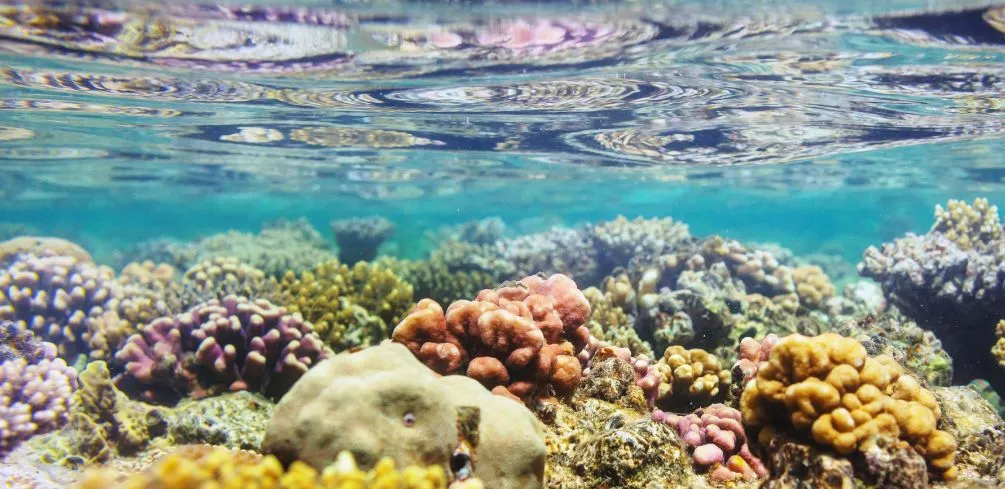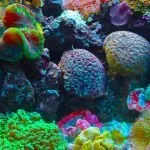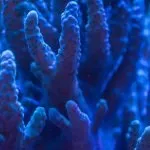Coral reefs are some of the most beautiful and diverse ecosystems on our planet. They are home to an incredible array of marine life, from brightly colored fish to majestic sea turtles and even sharks.
But with so many coral reefs around the world, it can be difficult to determine which ones are truly the best.
Fortunately, we have done the research for you and have compiled a list of the top coral reefs in the world.
Whether you’re an avid scuba diver or simply someone who appreciates natural beauty, these coral reefs are sure to take your breath away.
So sit back, relax, and let’s explore some of the best coral reefs that our planet has to offer.
Great Barrier Reef, Australia
Located off the coast of Australia, the Great Barrier Reef is one of the most famous and awe-inspiring coral reefs in the world.
Sprawling over 2,300 kilometers and covering an area of about 344,000 square kilometers, this natural wonder is a must-visit for anyone who loves marine life diversity.
The reef is home to over 1,500 species of fish, six types of sea turtles, and more than 30 species of whales and dolphins.
Despite its popularity as a tourist destination, the Great Barrier Reef’s weather conditions can be unpredictable. The best time to visit is during the Australian winter months (June-August) when temperatures are cooler and humidity levels are lower.
During this period, you’ll have a better chance of experiencing good visibility for diving and snorkeling. However, no matter what time of year you visit, the Great Barrier Reef promises an unforgettable experience filled with incredible marine life sightings that will leave you in awe.
Sipadan Island, Malaysia
Sipadan Island, located in Malaysia, is considered one of the best diving destinations in the world. This small island is surrounded by crystal clear waters and boasts some of the most diverse marine life on the planet. The reefs here are home to over 3,000 species of fish and hundreds of different types of coral.
The diving experience at Sipadan Island is truly unforgettable. From swimming with schools of barracuda to spotting sea turtles and hammerhead sharks, there is never a dull moment underwater. The visibility at Sipadan is also something to behold, with water clarity reaching up to 40 meters on a good day. It’s no wonder that many consider this to be one of the best places for diving in the world.
Three must-see marine creatures at Sipadan Island:
- Green sea turtles
- Bumphead parrotfish
- Whale sharks
Tips for an optimal diving experience at Sipadan Island:
- Book your dive trips in advance, as permits are limited.
- Bring a camera or rent one from a local dive shop to capture the stunning marine life
- Respect the delicate ecosystem and follow responsible diving practices
Best time to visit Sipadan Island for diving:
- April – December (avoiding monsoon season)
Red Sea, Egypt
After exploring the stunning coral reefs of Sipadan Island, we move on to another world-renowned diving destination – the Red Sea in Egypt.
The Red Sea is like a painter’s canvas, with its vibrant colors and intricate brush strokes of marine life.
It boasts an astonishing 1,200 species of fish and over 1,000 species of invertebrates, making it one of the best places to dive in the world.
Diving safety is always a top priority when exploring the underwater world, and the Red Sea does not disappoint.
With well-equipped dive centers and experienced instructors who prioritize safety, visitors can rest assured that they are in good hands.
Moreover, marine conservation efforts are also taken seriously in this region. There are several organizations dedicated to protecting the delicate marine ecosystem that exists within these waters.
As divers, it is important to take responsibility for our actions and ensure that we do not harm any living creatures or their habitats while exploring this natural wonder.
Raja Ampat, Indonesia
Raja Ampat, located in Indonesia, boasts some of the best coral reefs in the world. The area is home to over 1,500 species of fish and 600 species of coral.
Diving opportunities here are endless.
The clear turquoise waters provide a perfect opportunity to explore the vibrant marine life that lives below the surface.
The marine life in Raja Ampat is incredibly diverse. You’ll have the chance to see everything from pygmy seahorses to giant manta rays.
With so much variety, every dive feels like a new adventure. Whether you’re an experienced diver or just starting out, Raja Ampat has something for everyone.
Come discover the beauty of this underwater paradise for yourself!
Belize Barrier Reef, Belize
The Belize Barrier Reef is a natural wonder that has been attracting tourists from all over the world. It is home to some of the best scuba diving sites in the world, with crystal-clear waters and an abundance of marine life.
Scuba diving in the Belize Barrier Reef is an experience like no other. The reef is home to over 500 species of fish, as well as whale sharks, dolphins, and sea turtles.
Divers can explore underwater caves and swim through tunnels while admiring the colorful coral formations. Whether you are a beginner or an experienced diver, there are dive sites for every level.
With its rich biodiversity, diving in the Belize Barrier Reef is truly an unforgettable adventure for any nature lover or adventure seeker!
As you explore the reefs, you will come across a myriad of marine life – brightly colored fish darting in and out of coral formations, lobsters hiding under rocks, and even nurse sharks sleeping on sandy patches. The Belize Barrier Reef is also home to several endangered species such as manatees and crocodiles.
In addition to diving, visitors can also enjoy snorkeling tours or take a glass-bottom boat ride to see the stunning coral formations without getting wet.
The Belize Barrier Reef offers visitors a chance to witness one of nature’s most beautiful creations up close. With its breathtaking scenery, diverse marine life, and endless opportunities for adventure, it’s no wonder why this reef remains one of the best coral reefs in the world!
Frequently Asked Questions
How Do Coral Reefs Form?
Imagine a vast ocean world where the colors are vibrant and the creatures mesmerizing. This underwater wonderland is home to one of the most beautiful natural formations on earth, coral reefs.
But how do they form? Well, submarine currents play an important role in the formation of coral reefs. These currents bring nutrient-rich water to the surface, which helps stimulate the growth of reef-building organisms such as corals.
Another factor that affects their formation is ocean temperature. Corals thrive best in warm waters with temperatures ranging from 23-29 degrees Celsius. When these conditions are met, corals can grow into massive structures that attract a diverse range of marine life.
Understanding how coral reefs form not only satisfies our curiosity but also highlights their importance in maintaining a healthy underwater ecosystem.
What Is The Biggest Threat To Coral Reefs?
The biggest threat to coral reefs is undoubtedly climate change and its associated effects, such as ocean acidification. These phenomena have caused significant damage to coral ecosystems worldwide by increasing sea surface temperatures and altering the chemical balance of seawater.
The rise in greenhouse gas emissions has led to warming oceans, which can cause corals to bleach and ultimately die. Ocean acidification also poses a threat, as increased carbon dioxide levels in the atmosphere dissolve into seawater, making it more acidic and hindering the ability of corals to build their skeletons.
It’s crucial that we take action on climate change to preserve these vital ecosystems for future generations.
Can You Scuba Dive Or Snorkel In All Of These Coral Reefs?
Yes, scuba diving and snorkeling are available in many of the world’s best coral reefs. However, it is important to prioritize dive safety before venturing into the depths of the ocean.
Ocean currents can be unpredictable and strong, potentially leading to dangerous situations for even experienced divers. Before embarking on any underwater adventure, it’s crucial to do thorough research and follow proper safety protocol.
By taking the necessary precautions, individuals can enjoy the beauty of these breathtaking coral reefs without compromising their own safety or that of marine life.
Are There Any Endangered Species That Can Be Found In These Coral Reefs?
Endangered species can be found in some of the world’s best coral reefs. However, these areas are not immune to the impact of marine pollution and climate change.
The increase in water temperature due to climate change has caused coral bleaching, leading to the death of many species that call these reefs home. Additionally, marine pollution, such as plastic waste, can harm marine life and affect their habitat.
It is important for us to take action and reduce our carbon footprint and waste production to preserve these beautiful ecosystems and protect the endangered species living within them.
How Can Individuals Help Protect And Preserve These Coral Reefs?
Individuals can play a vital role in protecting and preserving coral reefs, which are essential to the world’s marine biodiversity. In fact, more than 25% of all marine species depend on coral reefs for their survival.
Unfortunately, these ecosystems are under threat due to climate change and marine pollution. Rising temperatures cause coral bleaching, while pollution leads to the destruction of coral polyps.
To help protect these vulnerable habitats, individuals can reduce their carbon footprint and support sustainable fishing practices. Additionally, reducing plastic waste and participating in ocean clean-up efforts can help prevent harmful pollutants from entering the water.
By taking small actions, we can all contribute to safeguarding these valuable ecosystems for generations to come.
Conclusion
In conclusion, the world is blessed with some of the most spectacular coral reefs that are home to a diverse array of marine creatures. These underwater wonders are formed over thousands of years by tiny creatures called polyps that build intricate structures from calcium carbonate.
Sadly, human activities such as pollution and climate change pose a significant threat to these fragile ecosystems.
Fortunately, many of these coral reefs are open for exploration by scuba divers and snorkelers who can witness firsthand the beauty and wonder of these natural wonders. From the Great Barrier Reef in Australia to the Belize Barrier Reef in Central America, there is no shortage of breathtaking sights to see.
However, it’s important to remember that many endangered species call these coral reefs home, and it’s our responsibility to protect and preserve them for future generations. By reducing our carbon footprint, being mindful of our waste, and supporting conservation efforts, we can all play a role in protecting these precious ecosystems.
Let us work together to ensure that these vibrant underwater worlds continue to thrive for years to come.





